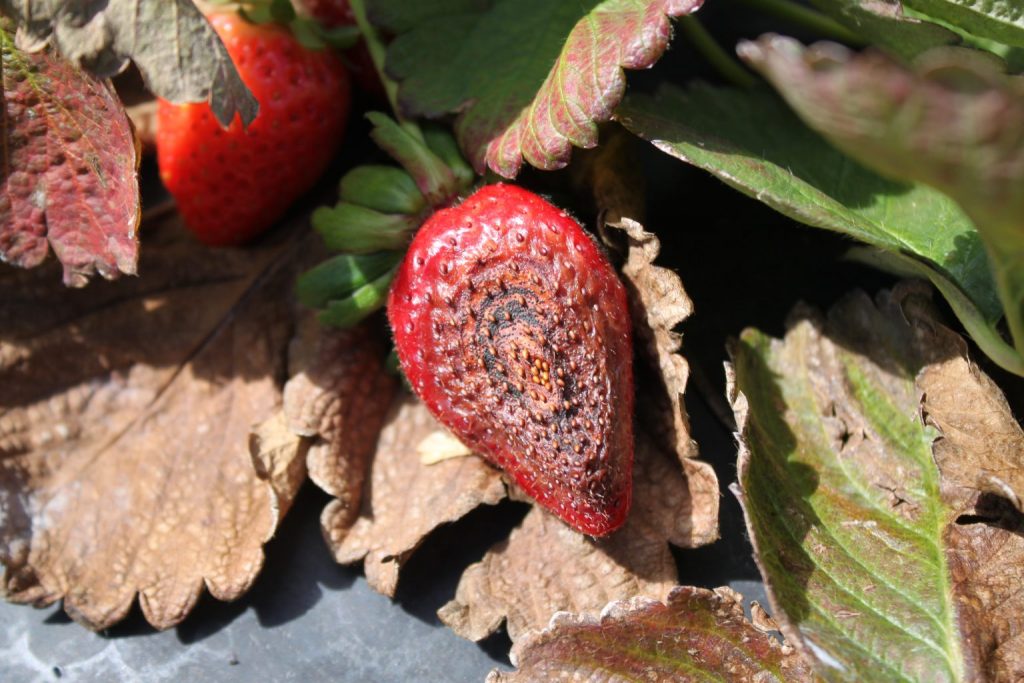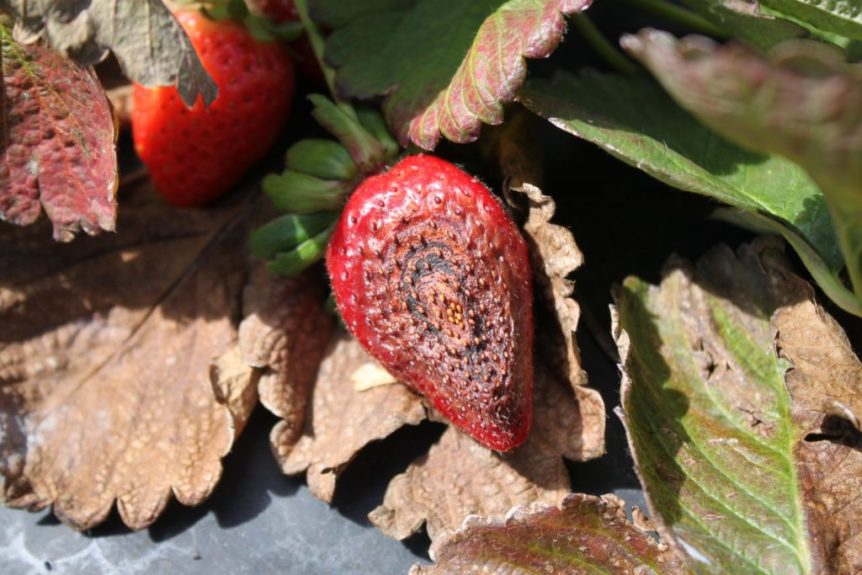By Clint Thompson
Alabama strawberry producers are at greater risk than ever of planting a crop impacted by Neopestalotiopsis. But Ed Sikora, professor and Extension plant pathologist in the department of entomology and plant pathology at Auburn University, contends that the weather next spring will be an ‘X’ factor in determining the disease’s impact on the state’s crop.

“I think the information that came out of Canada and elsewhere that growers are basically starting behind the eight ball with potentially or likely infected transplants or tips definitely raises the level of risk, of course,” Sikora said. “However, if we go hot and dry again in the springtime, pre-harvest or during the harvest season, that disease just might not be as bad as it could be.”
There was a recent revelation that Neopestalotiopsis has infected strawberry plug plants originating from nurseries in Prince Edward Island and will certainly impact Alabama producers. Phil Brannen, University of Georgia (UGA) Cooperative Extension fruit disease specialist, noted in the UGA Extension Strawberry Blog that nurseries are canceling orders or advising plug plant growers to take plants at their own risk. The disease levels currently observed in nurseries will likely impact the supply of tips, and therefore, plug plants for many strawberry producers.
Disease Background

Neopestalotiopsis can lead to severe leaf spotting and blighting under favorable weather conditions, specifically during extended periods of wetness. That makes next spring’s weather a huge factor in whether the disease’s potential becomes a reality.
“I think the key word is potential. A lot will depend on their source of transplants of course, but really the weather and what we experience going into the spring,” Sikora said.
Neopestalotiopsis causes leaf spots on strawberry plants. It develops quickly and produces spores on the leaves. It can cause severe leaf spotting and fruit rot under favorable weather conditions. The disease was first discovered during the 2018-19 season in five farms and was attributed to one nursery source in North Carolina.
More than 20 farms experienced the disease during the 2019-20 season. It was attributed to two nursery sources early in the season in North Carolina and Canada.










